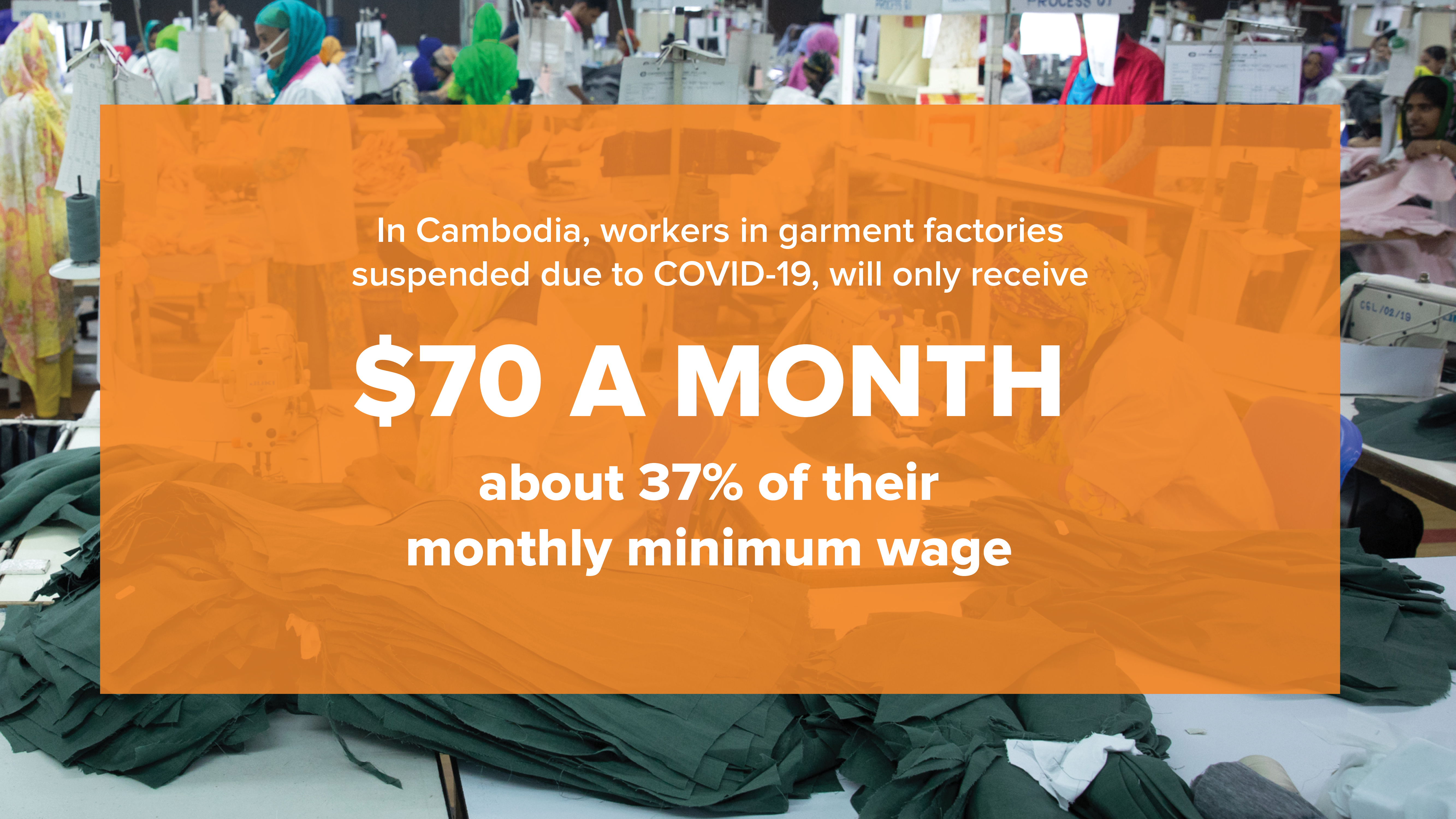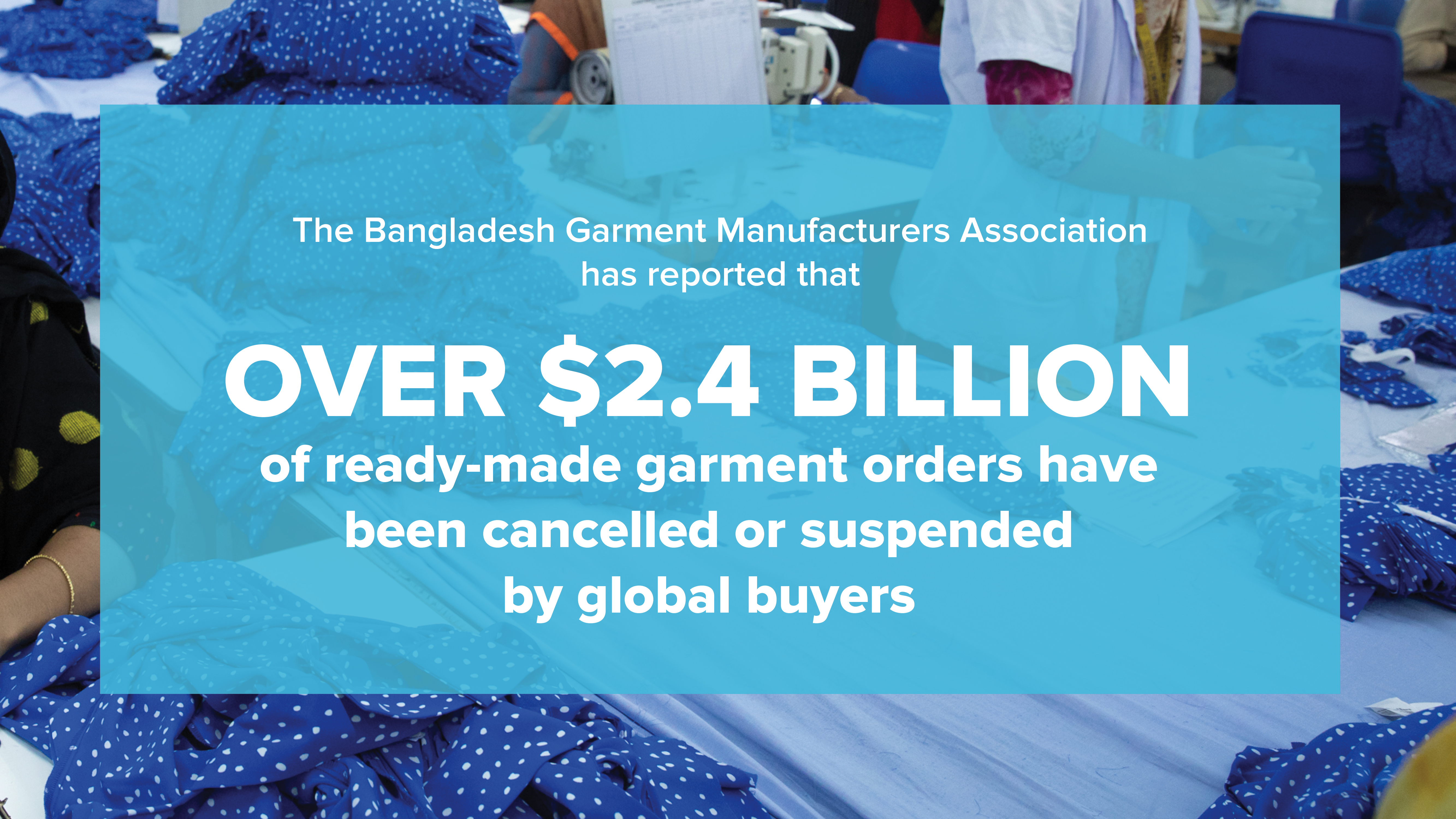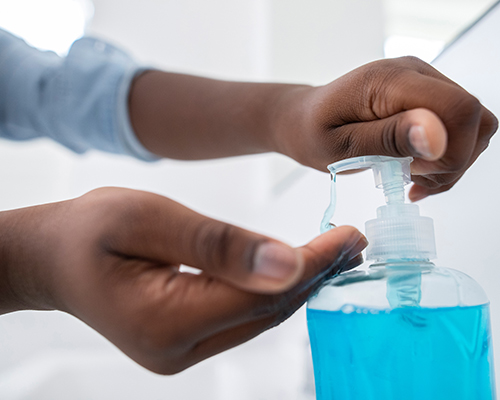The COVID-19 pandemic has quickly transformed from a global health crisis into a financial crisis, particularly for low-income female workers in global supply chains. However, companies can effectively deploy preventative measures to support workers and workplaces to protect their health and strengthen their financial resilience.
Developing countries—where many supply chain production sites are located—are not equipped with the economic resources and medical facilities and commodities required to mount an effective public health response. Compounding this issue, businesses faced with the mass cancellation of orders from global brands or government lockdowns are closing their business doors and laying off low-income workers.
In the context of a health emergency, the implications of gender inequality are stark. COVID-19 is no exception and will affect women and girls disproportionately. With approximately 190 million women working in global supply chains, the outbreak is especially concerning for low-income female workers, resulting in:
- Added economic hardship on a population whose financial status is already stretched too thin and put at risk of being unable to pay for bare survival necessities;
- Exacerbated risk of violence against women, increasing the level of stress and the disruption of social and protective networks and decreasing access to protective services;
- Being relegated to traditional gendered roles as primary caretakers by both solely looking after children during school closures as well as the sick and elders;
- Increased exposure to COVID-19 as those most in contact with sick family members and elders (who are most at risk of the virus) and also likely nexus of transmission by being primary caretakers.

Women already have limited financial means and struggle to meet expenses under normal circumstances. With many of them paid in cash wages, sudden workplace closures or layoffs can also mean pay delays or reductions or worse. In Cambodia, workers in garment factories suspended due to COVID-19 will only receive $70 a month (about 37 percent of their monthly minimum wage), a shock which could have a dramatic and long-lasting impact on their lives. In Bangladesh, the Bangladesh Garment Manufacturers Association has reported that over $2.4 billion of ready-made garment orders have been cancelled or suspended by global buyers, describing it as a "catastrophic" move which will directly affect almost 2 million workers, mostly women. This drastic slowdown in commerce, combined with the preexisting financial inclusion gender gap, makes female workers even more vulnerable and less likely to have access to remittances, savings, or insurance that could help them in emergencies.

Not going back to work is not an option. Workers are more concerned about getting paid—regardless of the health risks. "We have not been paid for two months. We are starving," a female garment worker, Brishti, recently told AFP during a protest in Dhaka. "If we don't have food in our stomach, what's the use of observing this lockdown?"
But how can workers reintegrate into factory work in a safe and sustainable way? Workplaces need to implement preventative measures, upholding social distancing and improving hygiene practices. Workplaces, which gather people from different and densely populated communities into a confined space and have them handling the same objects, are an obvious vector for communicable disease transmission. Garment factories, which are staffed by approximately 60-80 percent women workers globally, are exceptionally at risk because the production process requires workers to operate in close proximity while passing products from one to another. It’s been documented that the coronavirus can be transmitted through handling cardboard boxes passed between workers. As the material of choice for packhouses, this puts packhouse workers at higher risk of picking up traces from carton to hand.

So how should businesses consider the needs of female workers when reopening their doors?
Reproductive Health to Ensure the Sustainable Return of Women at Work
Health resources normally dedicated to reproductive health go towards emergency response in times of crisis. At the same time, past pandemics have showcased a rise in domestic violence which lead to additional unwanted pregnancies. Ensuring continued access to family planning resources and preferred contraceptive methods during COVID-19 will be key to ensure that low-income women who are already facing financial hardship from this pandemic are not faced with the added economic hardship of having a child. Furthermore, it ensures that they are able to return to work and not forced to drop out to care for a newborn. Access to contraceptives may be hampered, however, by potential supply shortages during lockdown which reduce the stockpile of available commodities. Furthermore, low-income women suddenly out of work may find it difficult to make out-of-pocket payments while navigating insurance practices that often limit reimbursement to just one month of prescription drugs at a time. COVID-19 is an exemplary reason why employers should ensure their workforce’s modern family planning needs are provided for at the workplace clinic or through referral mechanisms.
Physical Health and Safety in the Community and at Work
HERhealth baseline data in 2019 showcased that personal hygiene practices are weak and conducive to spreading germs like the coronavirus both at work and at home. For example, across eight factories in Bangladesh, 55 percent of 363 women workers could name only one benefit of hand washing. And yet, 13 years after we first launched a personal hygiene model, some donors ask us whether it is still relevant. Of course, the topic is now back on the map as a central public health concern, crossing both personal and professional spaces in order to survive the pandemic. Imparting a culture of handwashing, however, relies both on behavior and access to clean water and soap. HERhealth is reaching workers—both at work and in their communities—via digital means to improve hygiene best practices.
Production Pressure and Stress
It is commonly reported that poverty-related stress and economic insecurity can lead to an increase in intimate partner violence. When unemployment rates skyrocket and economies slow to a halt, intimate partner violence is likely to increase at home as a result of related stress. Similarly, following the reopening of factories, orders that were on hold will lead to increased production pressures. We know from experience that in times of stress, managers sometimes resort to abusive behaviors, such as shouting, insulting, and cursing, in an effort to motivate increased production. Such practices are unacceptable, and they give rise to conflicts, confrontations, and grievances that require negotiation and mediation. Support for managers and workers, especially female workers, while navigating the pressure of making up for lost profit and time while the factory was closed and its implications on management stress repercussions on women workers will be key to reopening factory doors.
Building Financial Health and Resilience
Although the protocol for wage payments during factory closures is determined by government, brands, and factories, we know that wage digitization is a more convenient, efficient way for factories to pay workers remotely, which also supports social distancing. For example, the Government of Bangladesh's $590m bailout package stipulates that workers must have financial accounts to receive wages. This enables workers to be paid, even if it’s through family members' financial accounts. More support will be required to ensure that workers, especially women, are able to control and benefit from their digital wages. Participants in the HERfinance Digital Wages program have been able to manage their finances better and increase their savings, helping to make them more resilient. The program found a 21-percent increase in both male and female workers reporting that they save regularly, and women were 17 percent likelier to report feeling confident that they can meet such unexpected costs as an emergency or family problem in the next two years.
Collaboration and good communications across brands and their suppliers, garment associations, governments, and development organizations will be key to helping garment workers recover from the COVID-19 shutdowns and build their resilience for future health and economic crises. Looking ahead, it will be crucial to consider how additional partnership efforts can support and prioritize workers’ health and financial resilience as businesses reopen. Early, bold, and effective action will reduce short-term risks to employees and long-term costs to businesses and the economy.

